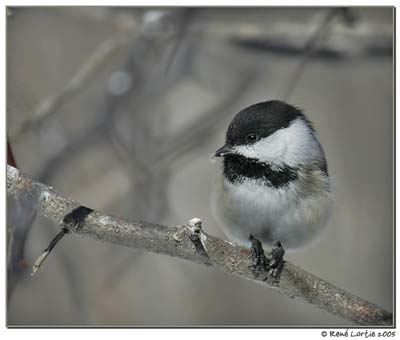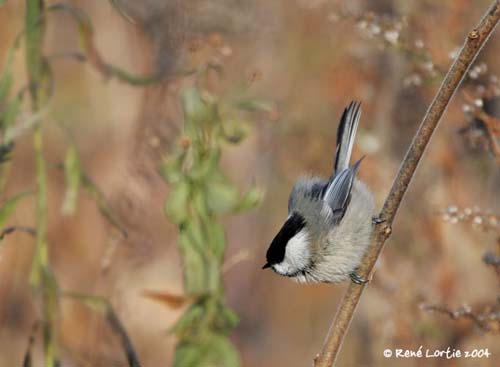
Black-capped Chickadee
Poecile atricapillus
Passeriforme Order – Paridae Family
BIOMETRICS:
Length: 12-15 cm
Wingspan: 16-21 cm
Weight: 9-14 g
LONGEVITY: Up to 12 years
DIET:
Black-capped Chickadee feeds on insects, caterpillars, snails and spiders. During winter, they eat berries and seeds that they hide for later.
PROTECTION / THREATS / STATUS:
Populations of Black-capped Chickadees are threatened by deforestation which can cause lack of natural nest cavities, but the clearings of the forests give more forest edges, favourable to this species.
Fr: Mésange à tête noire
All : Schwarzkopfmeise
Esp : Carbonero de Capucha
Ital : Cincia bigia apericana
Nd : Amerikaanse Matkop
Sd : Amerikansk talltita
Photographs by René Lortie
His website : http://rlortie.ca/
Text by Nicole Bouglouan
Sources :
HANDBOOK OF THE BIRDS OF THE WORLD Vol 12 by Josep del Hoyo-Andrew Elliott-David Christie - Lynx Edicions - ISBN: 8496553423
FIELD GUIDE TO THE BIRDS OF NORTH AMERICA - National Geographic Society - ISBN: 0792274512
All About Birds (Cornell Lab of Ornithology)
Bird Web (Seattle Audubon Society)
What Bird-The ultimate Bird Guide (Mitchell Waite)
Wikipedia (Wikipedia, The Free Encyclopedia)

DESCRIPTION:
Black-capped Chickadee has black head and throat, and white cheeks. Greater wing coverts and secondaries have broad white edges. Flanks are buff. The lower border of the throat is ragged. Back is pale grey. Tail is rather long with outer feathers broadly edged in white. Belly is greyish white.
Black-capped Chickadee has short black bill. Eyes are black. Legs and feet are dark grey.
Both sexes are similar.
Immature resembles adults.
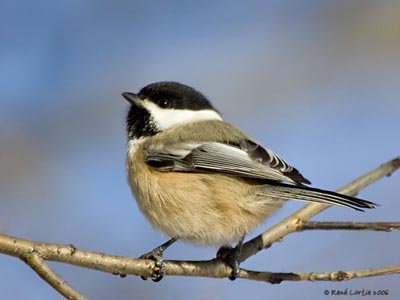
VOICE: SOUNDS BY XENO-CANTO
Black-capped Chickadee’s call is a low and slow “chick-a-dee-dee-dee”. Its typical song is a whistled and clear “fee-bee” or “fee-bee-ee”, with the first note higher than others. Male and female give a “tseet” at any time of year as contact call.
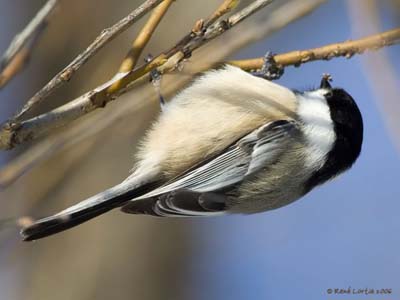
HABITAT:
Black-capped Chickadee is common in open deciduous and mixed woodlands, clearings and suburban areas. We can see the most of these birds at forest edges, in old fields, thickets and parks.
RANGE:
Black-capped Chickadee is resident all year round in its range. It is found in North America, mostly in Canada and northern two-thirds of United States. They can inhabit high elevations in mountains.
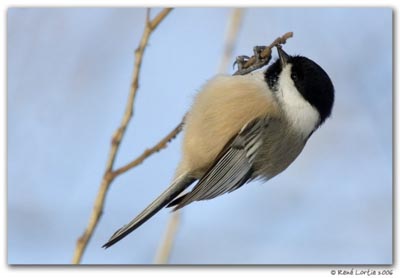
BEHAVIOUR:
Black-capped Chickadee is often found in small flocks, foraging in woodlands or at feeders. They glean from foliage and tree bark. They often hide berries and seeds in the crevices of bark or under leaves, and they can remember these locations for up to a month.
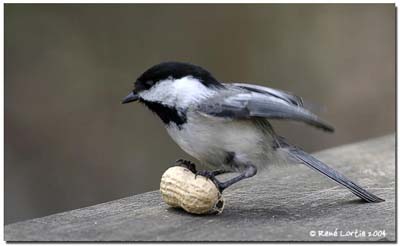
It is a bird constantly active, often hanged upside-down from branches, or hovering, gleaning and hawking. It can creep up a tree, and hop along the trunks.
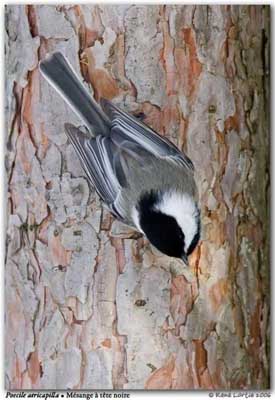
Black-capped Chickadees are monogamous, and mates remain together for several years. Pairs establish and defend their territory, and they remain on it or near it for the rest of their lives. Male feeds female during nesting and incubation periods.
Black-capped Chickadee lives in mixed flocks in winter, defending its feeding territory against other flocks. There is a hierarchy within the flock, male bird above female, and old above young bird.
In late winter, these flocks begin to break up, and male becomes intolerant of other members. Then, pairs separate from the flock to nest.
FLIGHT:
Black-capped Chickadee flies with rapid wing beats, at about 20 km per hour.
REPRODUCTION:
Black-capped Chickadee’s nest is often located in cavities they excavate themselves. They can also nest in natural cavities, woodpecker holes or nest boxes. Excavation needs up to one week, and female usually builds the nest in few days or two weeks. She is fed by the male during this period.
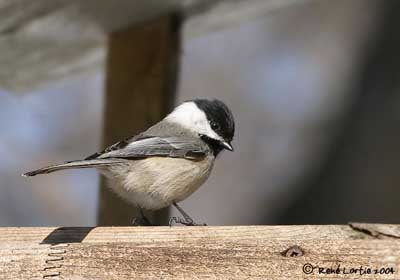
Nest is cup-shaped, and made with moss, and lined with rabbit fur, plant down, hair, feathers, and spider webs. Nest is usually built from 1,50 to 7 metres above the ground.
One or two days after the nest is finished, female lays 6 to 8 small no glossy eggs, of varied colours. She lays one egg per day, in the morning. When she leaves the nest for little time, she covers the eggs with nest material.
Incubation lasts about 12 to 13 days, by female fed by the male. When chicks hatch, female broods them for few days, until young are 12 days old.
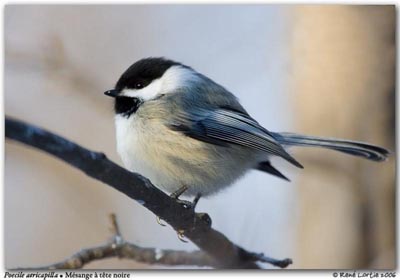
Male feeds the young during brooding, but when female stops brooding, both feed the young. Those fledge at 16 days of age, but they are fed by both parents for 2 to 4 weeks more, although they can feed themselves at 10 days.
This species produces one clutch per season. If a clutch is lost, female will attempt other brood, but in other nest.
